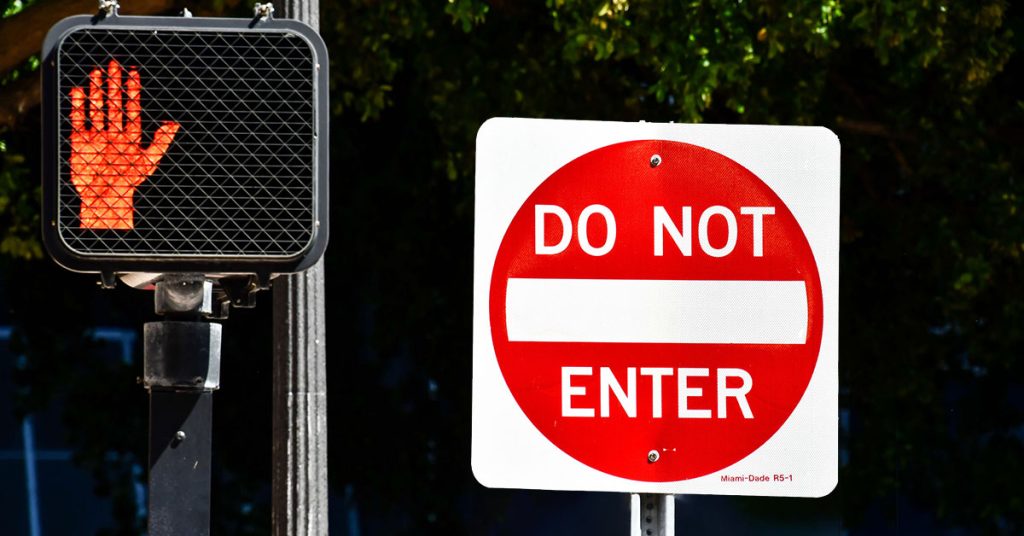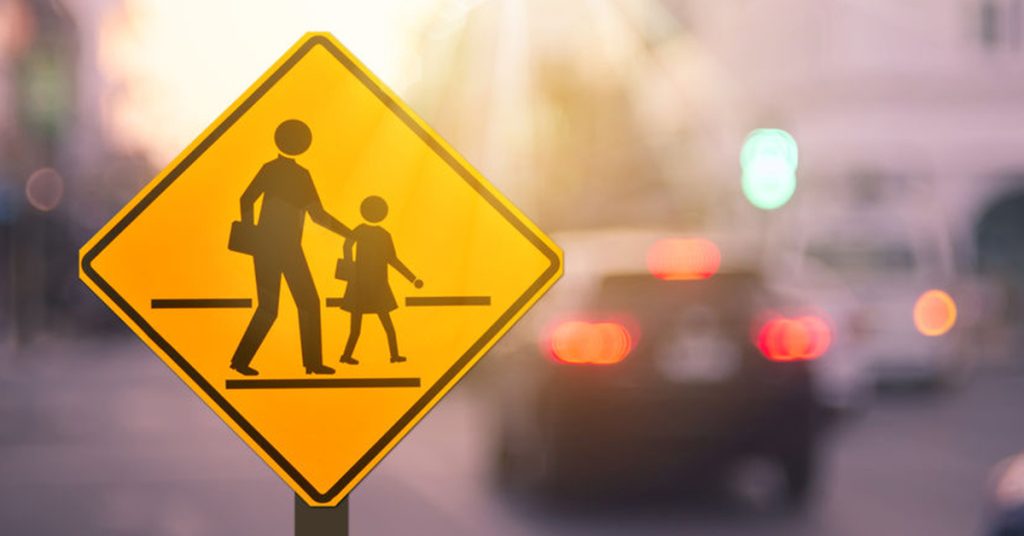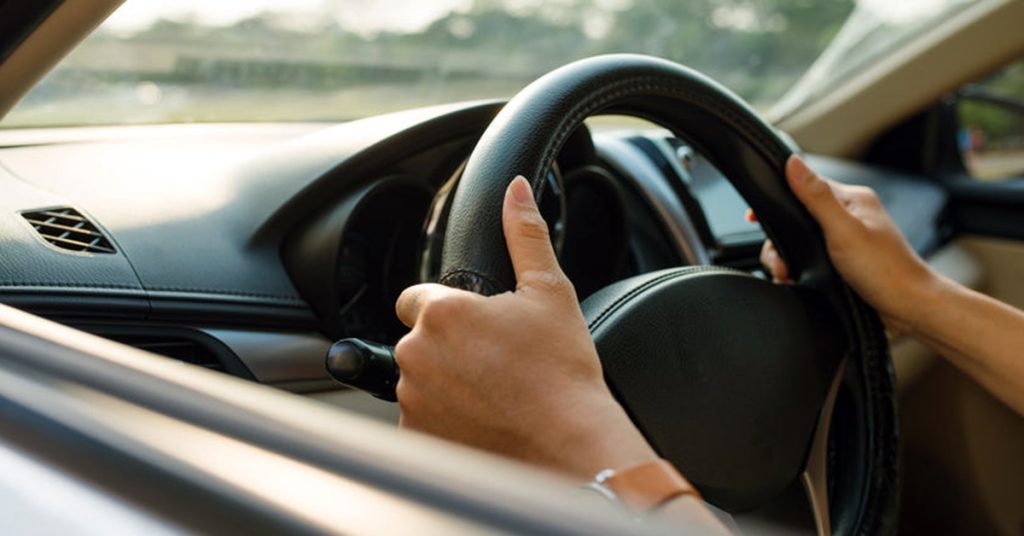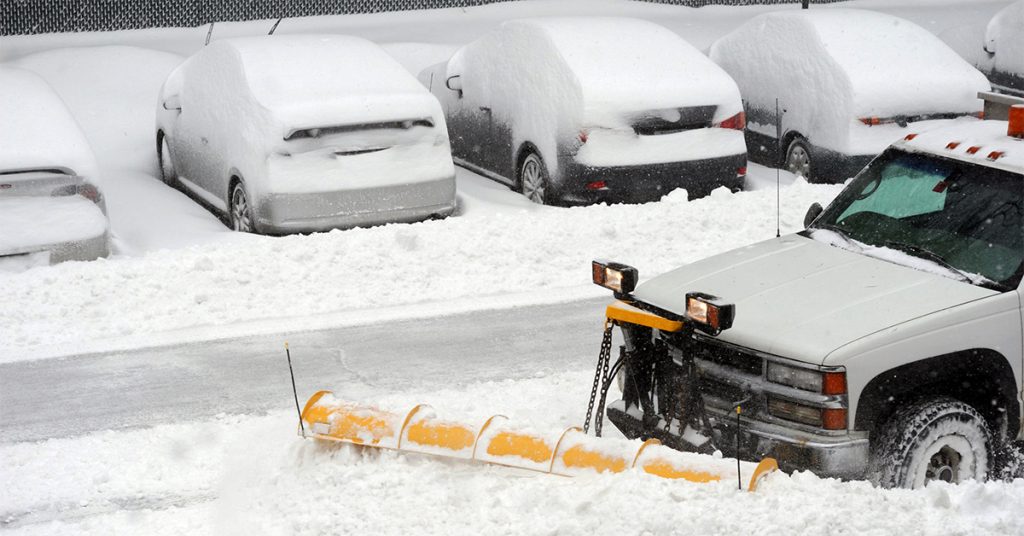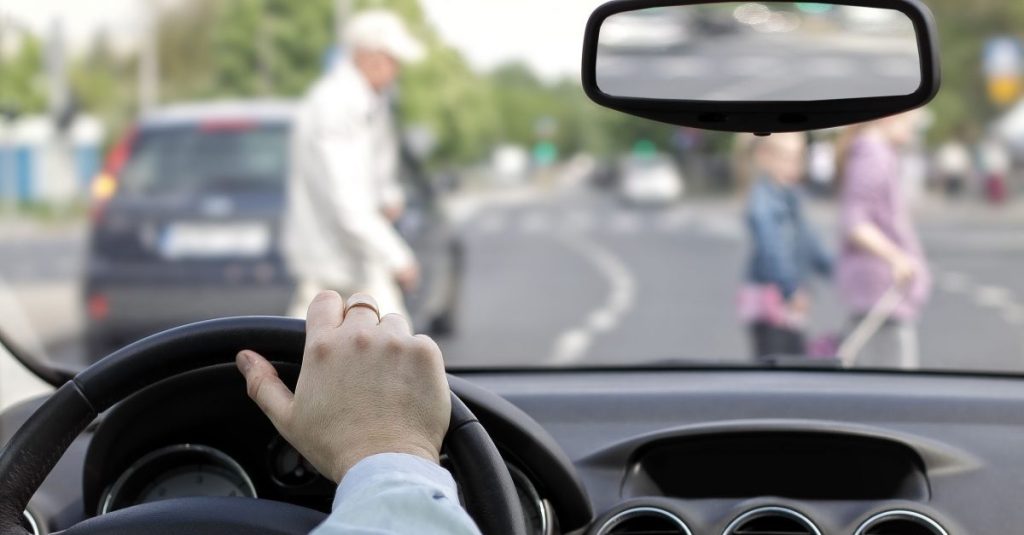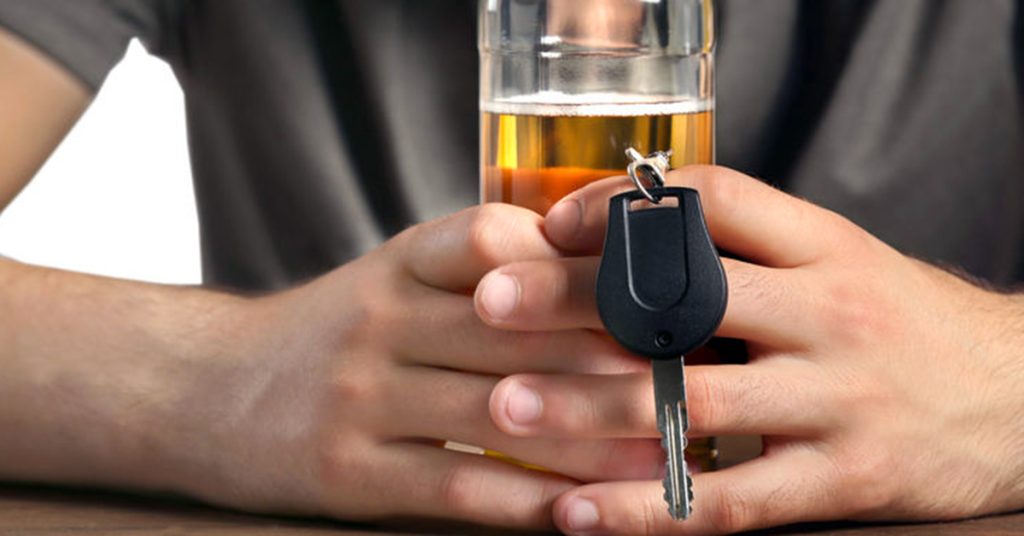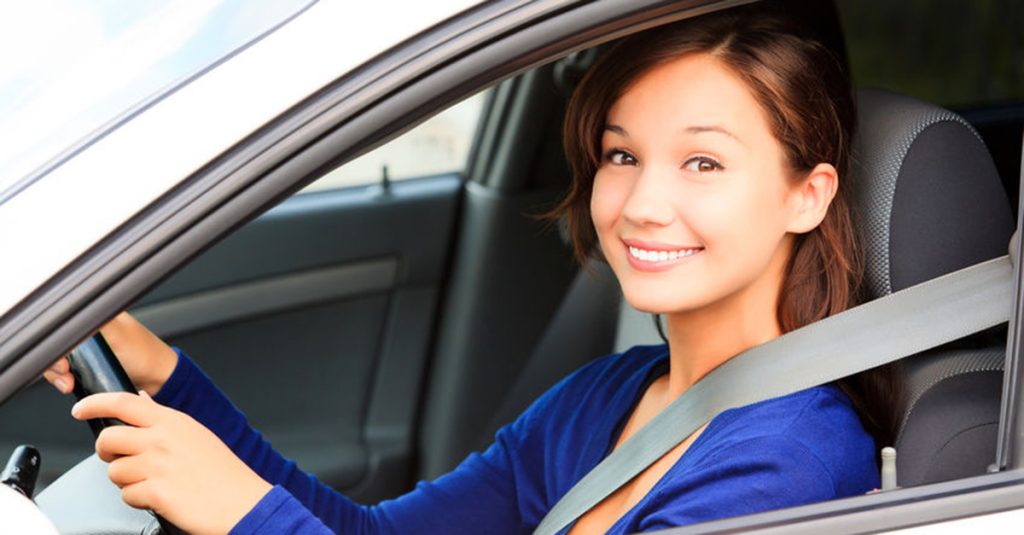Car Accidents
As Wrong-Way Crashes Rise, Drunk Driving is the Leading Cause, But a Driver’s Age and Driving Alone May Also Contribute
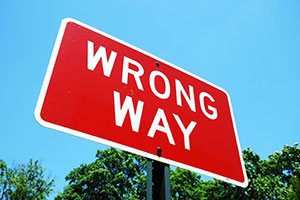
Wrong-way crashes are on a dangerous rise in Massachusetts and across the U.S., according to the AAA Foundation for Traffic Safety.
No one ever wants to hear the phrase “wrong-way crash.” But head-on collisions are frequent and often fatal on Massachusetts highways.
A new traffic analysis reveals the number of wrong-way crashes is rising on divided highways across the U.S. The majority of these auto crashes involve an alcohol-impaired operator. Drivers are exceeding the legal limit in 6 of 10 wrong-way car crashes, according to the AAA Foundation for Traffic Safety.
Drunk driving is the leading cause. Yet researchers say other factors, including a driver’s age and driving without a passenger, contribute. For example, 87 percent of wrong-way drivers travel alone. Passengers can be a resource for drivers, giving them an extra set of eyes to catch potential mistakes.
As for older drivers, those between 75 and 79 drive fewer miles and spend less time driving than younger operators. Still, they are more likely to be involved in a wrong-way crash and states are being urged to review how they identify medically at-risk drivers.
How Many Wrong-Way Crashes Are There in Massachusetts Each Year?
In Massachusetts, MassDOT data shows 150 people have died and more than 4,500 have been injured in wrong-way car accidents since 2010, according to CBSBoston.com. Since 2010, there have been 8,200 wrong-way crashes.
Nationwide, wrong-way accidents caused an average of approximately 500 deaths per year from 2015 – 2018, according to AAA. This represents a 34 percent increase from 2010 – 2014.
According to the CBSBoston.com report, the numbers also climbed in Massachusetts, from 19 to 27 deaths on average annually for the same period, a 78 percent increase.
Worcester recorded 366 wrong-way crashes, more than any other community in Massachusetts, followed by Springfield and Boston.
Wrong-Way Crashes Can Also Happen at Local Intersections
The AAA report focuses on wrong-way crashes on divided highways. Drivers can also make dangerous maneuvers resulting in wrong-way accidents at local intersections. From 2015-2018, the Federal Highway Administration reported roughly 400-450 wrong-way crashes at intersections.
Crashes may not be reported the same way at intersections, which have different traffic conditions, speeds and signage. When there is a wrong-way crash, the driver may be cited for another infraction, such as a marked lanes violation or failure to stop for a traffic signal.
But if you have been seriously injured at an intersection with a “Do Not Enter-Wrong Way” sign, it is in your best interest to consult an experienced car accident attorney who can thoroughly investigate the cause of a collision and your injury. An attorney can help you secure evidence promptly and with every aspect of your claim should you need to seek compensation from an at-fault driver’s insurance policy.
Strengthening Traffic Laws to Reduce Wrong-Way Crashes
The AAA Foundation for Traffic Safety and the National Transportation Safety Board are working to educate drivers about taking safety precautions to avoid wrong-way crashes and head-on traffic crashes. The most fundamental step is not to drink and drive.
The organizations also support passage of safety laws and infrastructure improvements, including more visible traffic signs.
Ignition-interlock laws are part of this effort and all eyes are on Massachusetts. We are the only state which does not require drivers with a first-time OUI conviction to utilize ignition interlocks, which test one’s blood alcohol concentration before they start driving.
However, after years of unsuccessful debate, Massachusetts may finally be moving closer. Last December, Gov. Charlie Baker signed an amendment to the state budget which if passed, will make ignition interlocks mandatory for all drivers convicted of operating under the influence. This could make a meaningful difference in discouraging choices that lead to drunk driving crashes and very serious injuries across Massachusetts.
Tips for Driving Safely on Highways
Do Not Drink and Drive. Never consume alcohol – or marijuana or other drugs – then drive. Use the designated driver system if you plan to go out and consume alcohol. Drivers have the same responsibility when using prescription medications which carry safety warnings about driving. If you have a question, consult your doctor on when and how you should use your medication.
Stay Alert. Do not drive if you are drowsy or fatigued. If you find yourself too tired to drive, stop your vehicle and come up with a short-term plan for getting some rest or grabbing a cup of coffee. There is always an alternative, including Uber or Lyft. Drivers often want just to push through and reach their destination. But if your vision is blurry or you cannot focus, you are driving negligently and putting others in harm’s way.
Drive with a Friend. You can split up the driving responsibilities, which will reduce your fatigue.
Avoid Distracted Driving. Reaching for a cell phone is the cause of many auto accidents. You are not using reasonable care to drive safely if you attempt to make a phone call while traveling through highway traffic, among other cars, SUVs and large trucks.
While Massachusetts has a hands-free driving law and drivers are legally allowed to make phone calls with Bluetooth devices, the safest approach is to still look for a rest stop or exit and safely park your vehicle before using your phone.
Create a Family Support System. Families can support each other in getting home safely. Try to develop a network of friends and loved ones who will support you. Ask them in advance if they would be willing to come pick you up if you ever needed a ride. Be willing to do the same for them.
Help Older Drivers Plan. Be proactive. Take time to discuss transportation options with the older driver in your life. If they drive, help them plan the best times of day to travel and steer them away from the highway. Remind them the importance of having a regular eye exam.
Let them know they have support. Make a schedule for your loved one to get out several times a week with you, other family members, grandchildren or a Council on Aging.
Free Legal Consultation – Call Our Boston Auto Accident Lawyers
With more than 100 years combined experience, Breakstone, White & Gluck specializes in representing those who have suffered serious personal injury or wrongful death due to negligence. We are based at 2 Central Plaza in downtown Boston.
With expertise in Massachusetts insurance laws and traffic accident investigations, our attorneys are here to guide clients through the difficulties you face after a serious accident. For a free legal consultation, contact Breakstone, White & Gluck and our car accident lawyers at 800-379-1244 or 617-723-7676 or use our contact form.
Sharp Rise in Pedestrian Fatality Rate During the First Half of 2020, Despite COVID-19 Restrictions
 Less traffic did not mean fewer pedestrian accidents in the early months of the pandemic. In fact, preliminary traffic data shows there was roughly the same number of fatal pedestrian accidents in the first half of 2020 compared to the same period of 2019.
Less traffic did not mean fewer pedestrian accidents in the early months of the pandemic. In fact, preliminary traffic data shows there was roughly the same number of fatal pedestrian accidents in the first half of 2020 compared to the same period of 2019.
However, because there were fewer cars out, the Governor’s Highway Safety Association (GHSA) is actually projecting a 20 percent increase in the pedestrian fatality rate per one billion miles traveled, according to the report, “Pedestrian Traffic Fatalities by State: 2020 Preliminary Data.”
According to the data analysis, 2,957 pedestrians were killed in motor vehicle crashes during the first half of 2020. This is 6 more pedestrians than the same period of 2019, when the calculation included more vehicles on the road.
If trends continue, 2020 could end up having a record rate of fatal pedestrian accidents, despite having fewer cars on the road.
How much less traffic? The Federal Highway Work Administration reported a 16.5 percent decrease in traffic on all roads and streets in 2020. Here in Massachusetts, MassDOT reported an immediate 50 percent reduction in traffic volumes in April 2020. Massachusetts traffic volumes were still 20 percent lower than normal in September 2020, according to our past blog on COVID-19 traffic conditions in Massachusetts.
Larger Trend of Pedestrian Fatalities
For years, pedestrian fatalities have been on a dangerous rise in the U.S. Prior to COVID-19, pedestrian traffic fatalities stood at the highest levels since 1990. There was a striking 46 percent increase in these accidents from 2010 to 2019, according to the GHSA. In 2019, pedestrian traffic fatalities accounted for roughly 17 percent of all traffic deaths.
How Many Pedestrian Fatalities Occurred in Massachusetts During COVID-19 in 2020?
In preliminary data, Massachusetts reported 17 pedestrian fatalities in the first half of 2020, compared to 32 from January to June 2019.
Massachusetts was one of 20 states, along with Washington D.C., which reported a decrease in the actual number of pedestrians who were killed in car accidents or crashes involving trucks, SUVs and other vehicles.
In 27 other states, the number of pedestrian fatalities in car accidents and truck crashes increased.
Notably, more than half of all pedestrian fatalities happened in seven of the most populous states, including Arizona, California, Florida, Georgia, New York, North Carolina and Texas.
Contributing Factors in the Rising Number of Pedestrian Fatalities
The GHSA cited several trends in these fatalities, including drivers who sped down open roads simply because there was less traffic.
Distraction and fatigue also contributed to many pedestrian crashes, including when drivers were negligent and failed to stop at an intersection or stay within the marked lane. In Massachusetts, the new hands-free cell phone law took effect in April 2020 but the impact was effectively delayed by Covid-19.
In addition, the report touched on the trend of drivers choosing light trucks and SUVs more often. In 2019, sales of light trucks and SUVs far outpaced passenger vehicles. The larger vehicles accounted for 72 percent of all auto sales.
Pedestrians are still more likely to be injured by a driver in a passenger car. However, over the past 10 years, there has been a 69 percent increase in SUV accidents resulting in pedestrian fatalities.
With larger frames, SUVs have a unique front-end design which is particularly threatening to pedestrians. In a pedestrian SUV crash, the grill can strike a pedestrian’s pelvis or chest at nearly the same time the vehicle’s bumper hits the lower extremities, increasing the force of the impact.
Free Legal Consultation – Boston Pedestrian Accident Attorneys
At Breakstone, White & Gluck, our pedestrian accident lawyers are committed to fighting for the rights of those injured or killed by a driver’s negligence or wrongdoing. We have represented clients after pedestrian accidents in Boston, Cambridge and throughout Massachusetts. Our attorneys have recovered significant awards, including:
- $7.1 million for our client was who hit by an MBTA bus in a South Boston crosswalk
- $2.15 million for the estate of our client who was hit and killed in a parking lot, which was not equipped with pedestrian safety bollards
- $1.375 million for our client who was hit by a speeding MBTA bus in Roxbury
If you or a family member has been injured in a pedestrian crash, learn your legal rights. For a free legal consultation, contact Breakstone, White & Gluck at 800-379-1244 or 617-723-7676 or use our contact form.
Watch for Savings, But Keep Paying Your Massachusetts Auto Insurance Premiums During the Pandemic
 It has been nearly a year since Massachusetts called the COVID-19 state of emergency. Your daily routine has completely changed and you are not driving very often. Do you still need to buy auto insurance at this point?
It has been nearly a year since Massachusetts called the COVID-19 state of emergency. Your daily routine has completely changed and you are not driving very often. Do you still need to buy auto insurance at this point?
Yes. Under state law, you are required to purchase a Massachusetts auto insurance policy if you have a driver’s license and register a vehicle. If you cause a car accident in Massachusetts, you are responsible for compensating anyone you have injured for their medical expenses and other financial losses. You also have to pay for property damage.
Auto insurers granted Massachusetts drivers some discounts last year, but lawmakers and consumer advocates are starting to raise the question of further discounts.
Calls for Action on Reducing Auto Insurance Premiums in Massachusetts
On Feb. 12th, the Lawrence-Eagle Tribune reported state Sen. Barry Finegold, D-Andover, and other legislators have asked the state Division of Insurance to review insurance rates, premiums and losses. They also want insurers to offer refunds from profits.
Attorney General Maura Healey’s office also recently asked regulators to reduce personal automobile insurance premiums by at least 25 percent, according to the newspaper. Her office cited data showing the frequency of liability coverage claims fell more than 50 percent between 2019 and 2020. There was a 70 percent drop in the frequency of collision coverage claims.
Our Massachusetts Auto Insurance Tips During COVID-19
Purchase the Minimum Auto Insurance
Under Massachusetts law, you have to purchase the required minimum coverage limits. There has been no change to the coverage limits during COVID-19.
- Bodily Injury to Others, $20,000 per person; $40,000 per accident
- Personal Injury Protection (PIP), $8,000 per person, per accident
- Bodily Injury Caused by an Uninsured Auto, $20,000 per person; $40,000 per accident
- Damage to Someone Else’s Property, $5,000 per accident
These are low coverage limits. In most cases, drivers should purchase more to adequately protect themselves and others if they cause a car accident. The key with auto insurance is you must purchase the right amounts and coverage types to protect yourself. Learn more about the different coverages in our article, “Understanding and Buying Massachusetts Car Accident Insurance.”
How Auto Insurance Protects You
Right now, you may be asking why you need to buy an auto insurance policy at all. This is a good time to remind you of all the ways your policy can work for you. Most drivers can appreciate that they are required to purchase auto insurance under Massachusetts law. At the very least, under M.G.L. c. 90, § 34J, you may face a fine between $500 to $5,000 if you are caught operating without insurance. Most drivers can also appreciate that auto insurance can protect them financially if they make a mistake and cause someone injury in a car crash.
But there are other protections. First, you may need your auto insurance to protect yourself. Even if another driver was at fault in a car crash, you may have to file a claim with your own policy for your medical expenses and lost wages. This would be true if you were injured by an uninsured or underinsured driver. This would also be the case if you were injured in a hit-and-run accident and could not identify the driver.
If you are a cyclist, you may be entitled to pursue a claim against another driver for your injuries in a bicycle accident. However, having your own auto insurance policy can provide necessary resources to help you recover, especially if the driver does not have auto insurance.
Another benefit is auto insurance can protect our loved ones or those living in our household. Call your insurance agent and ask to add these licensed drivers to your policy. They may be able to draw on the coverage should they ever be injured in a car crash or a bicycle accident and not have coverage elsewhere.
Keep Massachusetts Auto Insurance Payments Current
It is fine to evaluate your auto insurance. But do not withhold or miss an auto insurance premium payment or you could risk your insurer cancelling your policy. If you are facing financial hardship, one option is you can set up a payment plan over the year. In doing so, you may be losing a pre-payment discount, but it may be the best approach for your situation right now.
Before you call your insurer or insurance agent, learn as much as you can. Read the state advisory on Motor Vehicle Insurance Installment Payment Plans.
Seek Quotes from Massachusetts Insurance Agents
In Massachusetts, you can purchase insurance directly through an insurer or an insurance agent. Call and ask if you qualify for any discounts based on your current driving routine, vehicle, employer or group memberships. At a minimum, insurers should offer a discount for traveling more than 5,000 miles in a year.
It is usually worth requesting quotes from more than one insurance agent or companies. In Massachusetts, some insurance agents can offer quotes from multiple companies. Expect most to represent just a single company. Here is the state of Massachusetts insurance agent database.
Check for Discounts and Savings
The best types of discounts and savings are those you achieve just by checking in with your auto insurance agent. For instance, you may be eligible for a discount because you logged fewer than 5,000 miles on your car in 2020.
In some cases, this conversation may not result in savings. You may need to add someone to your household policy or purchase business coverage because you started using your vehicle for work. Whatever your situation, you have a responsibility to keep your auto insurer updated so you have proper coverage should you need it. Many people put their auto insurance coverage at risk without even realizing it when they move and start garaging their vehicle in a new location. Your auto insurance is calculated in part based on where you garage your vehicle. College students who take their vehicles to campus also need to update auto insurers.
Where to Learn More About Massachusetts Auto Insurance
We mentioned a few of our auto insurance articles in this blog. We also invite you to read our other auto insurance articles, including “What Every Massachusetts Bicyclist Needs to Know About Car Insurance” and “Massachusetts Motorcyclists: Buy the Right Types of Auto Insurance to Protect Yourself and Your Finances.”
Free Legal Consultation – Boston Car Accident Attorney
At Breakstone, White & Gluck, our Boston car accident lawyers are known for our commitment to pursuing the best financial result for clients. If you have been injured by someone else’s negligent driving, you may be entitled to seek compensation for your injuries. We represent clients throughout Massachusetts, including in Boston, Quincy, Cambridge, Somerville, Everett, Brookline and Arlington.
For a free legal consultation, contact our attorneys at 800-379-1244 or 617-723-7676 or use our contact form.
Report: Fatal Pedestrian Accidents Rose Over Decade in Massachusetts
The New Year has begun with several reports of pedestrian accidents across Massachusetts. One pedestrian was seriously injured in Springfield. Two pedestrians were killed, one in Charlestown and one in Oxford.
On January 5th, Boston Police responded to a fatal scene at Charlestown’s City Square. A 92-year-old pedestrian died after being struck by a vehicle near the Charlestown Navy Yard and dragged for nearly a mile, according to news reports. Police later announced they had located a vehicle of interest.
A new report highlights the dangerous climb in pedestrian crashes in the U.S. Between 2009 and 2018, the number of pedestrians killed in U.S. car crashes rose by 55 percent, according to the AAA Foundation for Traffic Safety. This is a major increase, following three decades of decreases.
In Massachusetts, 725 pedestrians were killed during this period. Another 17,000 pedestrians were injured. Boston, Springfield, Worcester, New Bedford and Brockton reported the highest numbers of pedestrian injuries and fatalities in Massachusetts.
Other notes:
- Most pedestrian injuries occurred between 3 p.m. and 7 p.m.
- 28 percent of the pedestrian accident victims in Massachusetts were 65 or older
- 3 out of 4 pedestrians killed on U.S. roads in 2018 were hit during darkness
- 84 percent of pedestrian accidents over the 10 years occurred on streets with speed limits 30 mph or higher
- There was a 70 percent increase in pedestrians killed at non-intersection locations without crosswalks
AAA is calling on cities and states to improve traffic infrastructure to provide more protection to pedestrians.
This report is a good reminder for drivers to really watch for pedestrians. This is January and darkness comes early. We are also wrestling with the COVID-19 pandemic. Many Massachusetts residents are out of routine and may be walking in new areas and at different times. As a driver, you have the ability to slow down and that can make all the difference in preventing a pedestrian accident. According to StreetsBlog, a pedestrian struck by a driver traveling at 20 mph has a 93 percent chance of surviving.
Here are a few safety reminders for drivers:
- Obey traffic signs.
- Slow down. Travel below the speed limit.
- Stop for pedestrians at crosswalks.
- At traffic signals and stop signs, look front, back, right and left before you step on the gas. You have to watch for pedestrians as well as cyclists.
- Do not use your cell phone while driving.
Free Legal Consultation – Breakstone, White & Gluck
At Breakstone, White & Gluck, our Boston personal injury lawyers are known for our experience representing pedestrians who have been injured in motor vehicle accidents, truck collisions and bus accidents. We represent those injured by the negligence of others across Massachusetts, including in Boston, Cambridge, Somerville, Everett, Quincy and other areas. If you or a loved one has been injured, learn your legal rights.
For a free legal consultation, contact Breakstone, White & Gluck at 800-379-1244 or 617-723-7676 or use our contact form.
Massachusetts Supreme Judicial Court Rules Uber’s App Failed to Provide Consumers Reasonable Notice of Terms and Conditions

The Massachusetts Supreme Judicial Court has ruled Uber did not provide users with reasonable notice of its terms and conditions.
Have you ever signed up for a rideshare app and been frustrated to see the extensive terms and conditions – all on your small cell phone screen? Just what are you agreeing to?
You are not alone. Now, the Supreme Judicial Court of Massachusetts has found Uber failed to provide reasonable notice of its terms and conditions to users. A Massachusetts man and a family member filed a discrimination lawsuit against Uber in 2016, then were compelled into arbitration with the rideshare company based on the app’s terms and conditions.
But on Monday, the Supreme Judicial Court ruled there was no enforceable arbitration agreement between Uber and the plaintiffs in Christopher P. Kauders & another vs. Uber Technologies, Inc. The Supreme Judicial Court remanded the case back to Superior Court.
The Court reviewed Uber’s complicated registration process, noting app users could easily bypass the initial screens, but the process grew much more cumbersome as the consumer approached the terms and conditions and privacy policy.
The Court wrote certain terms and conditions were extensive and far reaching and, “may literally require an individual user to sign his or her life away, as Uber may not be liable if something happened to the user during one of the rides.”
The Facts
In 2016, the plaintiffs filed a civil lawsuit against Uber in Suffolk Superior Court, claiming that Uber had discriminated against them in violation of M.G. L. c. 272, § 98A. This statute prohibits discrimination against anyone who is blind, deaf or has another physical handicap and is accompanied by a guide dog in Massachusetts. One of the plaintiffs was blind and claimed three Uber drivers had refused him service in 2015 and 2016.
Citing a provision in its terms and conditions, Uber moved for arbitration against the plaintiffs’ opposition. On June 4, 2018, the arbitrator issued a ruling finding that Uber was not liable for the discriminatory acts of the drivers, who are independent contractors.
Then, on June 25, 2018, a decision came in the case of Cullinane vs. Uber Techs, Inc. The United States Court of Appeals for the First Circuit ruled that Uber’s registration process did not create a contract because app users did not have reasonable notice of the terms and conditions.
Users Not Given Reasonable Notice of Terms and Conditions
In Kauders, the Massachusetts Supreme Judicial Court wrote that Uber writes terms which are extremely favorable to the company and does not give users “reasonable notice” of the terms and conditions.
The Court concluded, “Uber’s terms and conditions did not constitute a contract with the plaintiffs. The app’s registration process did not provide users with reasonable notice of the terms and conditions and did not obtain a clear manifestation of assent to the terms, both of which could have been easily achieved.”
Another problem, the Court wrote, is Uber can amend the terms and conditions whenever it wants without consent from users. The burden is on the consumer to keep checking and there is no way for the consumer to object.
In response to the decision, an Uber spokeswoman told The Boston Globe the company had already modified its application forms in a way that should comply with the Court’s reasoning.
What if You Are Injured in a Rideshare Accident?
Rideshare companies have worked to limit their liability in many areas. However, those injured in rideshare car accidents in Massachusetts still have the right to pursue financial compensation for their injuries. In 2016, Massachusetts passed legislation to regulate Uber, Lyft, and other transportation network companies. Under the legislation, drivers must carry an adequate level of auto insurance while working for a rideshare company.
Rideshare accidents can happen and injure passengers, but also drivers of other vehicles and their passengers, as well as pedestrians and cyclists. If you have been injured, it is important to document whether a driver was operating a rideshare vehicle for work or personal use at the time of the crash.
This may be important because rideshare drivers are required to have additional coverage when logged onto the transportation company’s digital network or while the driver is engaged in a pre-arranged ride in Massachusetts.
In the News
Watch Attorney David W. White speak to NBC Boston about complicated rideshare app agreements in 2019:
Boston Car Accident Lawyers – Breakstone, White & Gluck
Breakstone, White & Gluck specializes in the handling of personal injury cases in Massachusetts and has been consistently recognized for our results, including as Top 100 New England Super Lawyers and Top 100 Massachusetts Super Lawyers.
If you have been injured in a car accident or a rideshare accident, learn your legal rights. It is in your best interest to consult a Boston car accident attorney before signing any documentation or speaking to the driver’s insurance company.
For a free legal consultation, contact Breakstone, White & Gluck at 800-379-1244 or 617-723-7676 or use our contact form.
Driving Safely in Massachusetts Snow Conditions
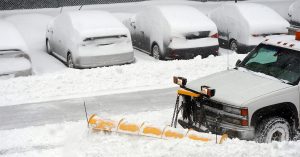
Drivers have a responsibility to use reasonable care and caution during snow conditions. In Massachusetts, numerous car accidents were reported across the state during last weekend’s Nor’easter. In Lowell, a woman in a wheelchair was killed by a snowplow crash.
When the snow starts to fall, get ready for winter travel conditions. While many Massachusetts residents are working remotely, most of us are still driving in some capacity and it is critical to prepare. You want to travel safely, slowly and defensively so no one is injured.
If you fail to exercise reasonable care during snow and ice conditions, you are more likely to slip, slide or crash on the road. You could cause yourself injury and need a new vehicle. But even more critical, you could cause someone else serious injury in a car accident. You could be held financially liable and have to pay a claim through your Massachusetts automobile insurance policy.
Stock your car up with emergency supplies. Include jumper cables, a snow shovel and scraper, a flashlight, extra windshield wiper fluid, antifreeze and a basic tool kit, with a screwdriver and other essentials. Also pack a warm blanket, bottled water and a snack, as well as a bright colored flag to wave should you need help. Another tip from the state of Massachusetts: have sand, road salt, a strip of carpet or kitty litter for traction should you need it.
Check your vehicle’s systems. Keep up with routine maintenance during the pandemic, even if you are not driving as often. On your own, you can inspect your tires, headlights and taillights to make sure they are working. You can also check your wiper blades and windshield washer fluid, heat and defrost.
Check weather alerts and traffic updates. Check both weather and traffic conditions before leaving home. Check weather conditions hour-by-hour so you are prepared.
Stay home. Avoid traveling during heavy snow conditions. If you must travel, use public transportation or delay your commute if possible.
Most New England residents do not re-arrange their travel plans for rain. Schools have “snow days” but not “rain days.” But be aware that any type of precipitation impacts visibility and safety on the road. One recent study looked at more than 125,000 fatal motor vehicle crashes between 2006 and 2011 and put a number on the risk for car accidents.
According to the study, published by the Bulletin of the American Meteorological Society, the risk rises based on the intensity of the precipitation. Light precipitation may increase the potential hazard by 27 percent. The risk more than doubles during heavier precipitation.
One of the researchers told the Washington Post that many drivers do not appreciate how the risk for crashes increases during even light rain.
Clear snow off your car. Plan an extra few minutes to remove snow from your vehicle’s roof, windshield and windows. You should be able to see in all directions from the driver’s seat.
In Massachusetts, police can cite drivers who neglect to clear snow because this interferes with safe travel. Drivers can receive a civil citation and have to pay a fine. However, the greater risk is that someone could be seriously injured by flyaway snow and ice or that the snow and ice could block someone’s view.
Drivers can prevent these accidents by simply doing a little more work before they drive. As a driver, you should know if you neglect to clear snow and ice and cause someone injury, you could be held financially responsible for the victim’s injuries and other damages. In Massachusetts, you could also be criminally charged with reckless or negligent operation of a motor vehicle. If you have been injured by a driver who neglected to remove snow and ice from their vehicle, you should report this fact to police investigating the car crash. You may also want to consult a Boston personal injury lawyer to learn your legal rights.
Slow down. Travel below the speed limit, even if others are traveling at the normal speed or speeding. Lowering your speed gives you more control over your vehicle. Remember, traffic is less predictable during snow storms and the road ahead may not be fully plowed. With less visibility, you may will need to watch more closely for pedestrians.
Charge cell phones. Keep your phone charged so you can use it during an emergency, but don’t use it. It is best to wait until you get home to talk, even if you are using an in-vehicle system or Bluetooth as allowed under the Massachusetts hands-free law. You can still cause a car accident if you are distracted and using a cell phone, even if you are following the law. You can still be held liable if you cause someone injury because you were not paying attention.
Travel safely near plow trucks. The state of Massachusetts advises drivers to stay at least 200 feet back when approaching a snow plow truck or other snow removal equipment. Do not attempt to pass a snow plow at any time. Drivers should be prepared for snow plows to make sudden stops at any time. Staying back gives you more time to slow down or stop, reducing the chance of a snow plow crash.
Snow plow drivers are likely to have poor visibility and you do not know how long they have been working without a break. What you can do is turn your vehicle lights on and wipe these clean from snow regularly. By taking these steps and giving snow plow drivers space, you are less likely to be involved in a collision with a snow plow or other vehicles also trying to dodge the snow plow.
Snow plows need as much room as possible in part because they must also watch for pedestrians.
Less than a week ago, there was a tragic accident in Lowell. The two pedestrians, one of whom was in a wheelchair, were struck at the corner of School and Cross streets. The 27-year-old woman in the wheelchair later died, according to NBC Boston. She was with a 39-year-old man and both were wearing safety jackets with reflectors, one witness at the scene told the news station. The accident was under investigation by the Middlesex District Attorney’s Office.
Because of the risk for plow truck accidents, we also caution drivers to avoid these vehicles in parking lots. Pedestrians have been hit, injured and killed by plow drivers in Massachusetts parking lots.
Free Legal Consultation – Boston Car Accident Attorneys
Breakstone, White & Gluck has a track record of successfully representing those injured by negligent drivers in car accidents, SUV crashes and truck collisions. We are experienced in investigating snow plow accidents which have injured pedestrians and other motorists, as well as other vehicle crashes in snow conditions.
Founded in 1992, Breakstone, White & Gluck represents clients across Massachusetts, including Boston, Cambridge, Somerville, Everett, Quincy, Milton, Lynn and Saugus.
If you have been injured in a car crash, it is in your best interest to learn your legal rights. For a free legal consultation, contact Breakstone, White & Gluck at 800-379-1244 or 617-723-7676 or use our contact form.
Tips to Protect Older Pedestrians From Vehicle Crashes During the Cold and Dark Winter in Massachusetts
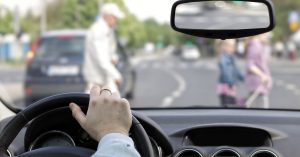 It is a fact: pedestrians age 65 and older face an increased risk for being injured by a car accident or truck crash. According to the Centers for Disease Control and Prevention (CDC), pedestrians of this age accounted for 1 in 5 pedestrian deaths in the U.S. They also suffered 1 in 10 percent of all injuries.
It is a fact: pedestrians age 65 and older face an increased risk for being injured by a car accident or truck crash. According to the Centers for Disease Control and Prevention (CDC), pedestrians of this age accounted for 1 in 5 pedestrian deaths in the U.S. They also suffered 1 in 10 percent of all injuries.
November, December and January are among the darkest months of the year in Massachusetts. At Breakstone, White & Gluck, our lawyers caution all pedestrians take steps to protect themselves. Start before you leave home. One of the most effective steps you can take is to wear a neon colored vest, jacket or other accessories so drivers can see you.
Safety Tips for Older Pedestrians
Arrange for a Ride. During the winter months, ask a friend or family member to give you a ride to the store and help you with other errands. If you do not have someone, call your local town or city hall to speak to their Council on Aging, which may be able to help arrange you a ride. You can go back to walking in the Spring when there is better visibility.
Use Crosswalks. In Massachusetts, pedestrians have the right of way when walking across the street in a crosswalk which has a “Walk” signal or green light.
Do Not Cross the Street Alone. Look for areas where there is a crossing guard if you can. Also look for areas where there are other pedestrians crossing. Do an honest evaluation; if you are walking much slower than other pedestrians, you should only cross when there is a crossing guard or accept a ride.
Avoid Complicated Intersections. Rather than walking through complex intersections, either accept a ride or change your route for the winter months. Also stay clear of wide intersections or roads with traffic passing in both directions.
Be Mindful of Traffic Conditions. If you walk, do so during daylight hours and when traffic is lightest. This is not just advice for crossing the street. Keep this in mind when you are walking through parking lots, where there is a high risk for pedestrian accidents at night.
Find Another Way to Walk For Exercise. Many of us – young and older – like to incorporate some walking for exercise into our daily routines of work and errands. If you miss walking, find a way to walk off the street. Due to COVID-19 restrictions, it is not safe to work out at a health club or gym. You may have to explore other options for exercise this year, such as hiking or even just walking on a lawn. Again, we encourage you to ask friends, family members and others in your community for suggestions.
Safety Reminders for Drivers
Use Reasonable Care and Travel Slowly. Massachusetts drivers have a responsibility to use reasonable care when driving. During the winter months, this means watching for pedestrians at all times, including when you get in your car and when you park. This is the time to utilize your vehicle’s back-up camera. Also watch when you exit your vehicle so you avoid dooring a pedestrian or a cyclist.
Travel Slowly. You cannot control all traffic conditions. But you can control your speed. By traveling slowly, even under the speed limit in residential neighborhoods, you have a greater ability to stop for pedestrians and avoid a pedestrian crash. This is important because older pedestrians are likely to take more time to cross the street. Many pedestrian car crashes occur because a driver misjudged the pedestrian’s speed.
Approach Familiar Places With Caution, Too. Take care even when driving near familiar places, such as a friend’s home, the pizza place down the street or a nearby grocery store. At night, there is a different traffic pace. During the pandemic, the pedestrian and vehicle traffic is changing weekly. There is a greater chance of car accidents in these conditions.
Be Aware of Eye Strain. If prescribed, drivers should wear their glasses at night. The rest of us should also be aware of the risks of eye strain and drowsiness at night. When possible, keep night driving trips short to keep your eyes strong.
Do Not Use Cell Phones. Months after the Massachusetts Hands-Free Driving Law took effect, drivers should know there is no tolerance for picking up a cell phone. The act of dialing a number and cradling a phone takes a driver’s attention off the road for at least several seconds. Drivers have caused many pedestrian crashes through cell phone use. On the same note, pedestrians should set aside cell phones while walking at night near traffic and minimize distractions.
Free Legal Consultation – Breakstone, White & Gluck
Breakstone, White & Gluck has represented pedestrians injured by negligent driving in car accidents, bus crashes and truck collisions across Massachusetts, including in Boston, Cambridge, Quincy, Somerville, Chelsea and Everett.
If you have been injured by the negligence or wrongdoing of someone else, learn your legal rights. Breakstone, White & Gluck is an accomplished Boston law firm known consistently recognized for our results for clients, including by Top 100 New England Super Lawyers, Top 100 Massachusetts Super Lawyers and Best Lawyers in America.
In Boston, we are known for our experience and expertise in representing pedestrians who have been injured in MBTA bus accidents. We won a landmark personal injury case, resulting in a $7.1 million verdict for our client, after trial and appeals to the state’s highest court. Our client had the horrific experience of being struck by a MBTA bus in a South Boston crosswalk. The driver had admitted fault, and the MBTA police investigation confirmed the finding. But the MBTA refused to even make an offer of settlement and our attorneys pursued an award at trial.
For a free legal consultation, contact Breakstone, White & Gluck at 800-379-1244 or 617-723-7676. You can also use our contact form.
Discouraging Underage Drinking and Driving Accidents in Massachusetts
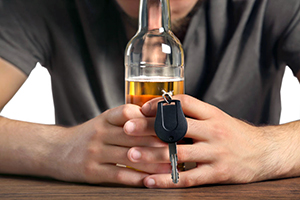
Teens are more likely to be killed in an alcohol-related crash than anyone else on the roads, according to the CDC.
Teen Driver Safety Week is Oct. 18-24, 2020. Breakstone, White & Gluck is sharing articles to encourage parents and teens to collaborate and discuss safe driving decisions.
As every parent well knows, it is not easy to talk to your teen about safe driving decisions. You may talk, while your teen just looks at your car keys. Despite the challenges, we encourage you to be patient and stay the course in these conversations, especially when it comes to discouraging drinking and driving.
Talk to your teen about their responsibilities. In Massachusetts, teens who are between 16 ½ and 18 are eligible for a junior operator’s license. Teens face special restrictions, such as they cannot carry friends who are under 18 without supervision for the first six months of driving. They are also banned from driving between midnight and 5 a.m. Like all drivers, junior operators are not allowed to drive under the influence of alcohol or drugs under any circumstances. They can face criminal penalties for operating to endanger/recklessly or while negligent. But the greatest danger is teens who operate while impaired are more likely to cause a drunk driving accident due to their impairment and poor choice.
We are writing about this because teens are more likely to avoid drinking and driving when they make the decision in advance, with a parent’s support, not to drink until they are 21.
Teach teens to respect the legal drinking age. In Massachusetts, you must be at least 21 years old to legally consume alcohol. Make sure your teen knows you expect them not to drink until they reach the legal age. Let them know they can talk to you or another family member if they face pressure to drink or someone offers them alcohol.
Be honest about why you want your teen to avoid alcohol. Explain that you want them to live the best life they can. As a teen, they are still developing physically, cognitively, socially and emotionally. As this happens, teens are still developing their values and their compass for making good decisions.
Consider this: those age 12 to 20 consume 11 percent of all alcohol in the United States, according to the Centers for Disease Control and Prevention (CDC). Because of their inexperience, teens are more likely to consume more drinks than an adult drinker.
Risk for injuries when teens drink and drive. Teens are more likely to be killed in an alcohol-related crash than anyone else on the roads, according to the CDC. In 2016, 1 out of 5 teens involved in fatal car crashes had been drinking.
Teens can put themselves at risk when they drive drunk, but another danger is when they travel with friends who have consumed alcohol. According to the 2017 National Youth Risk Behavior Survey, 16.5 percent of high school students had traveled with a driver who had consumed alcohol in the previous month. This is a revealing number, but it gets worse.
Unfortunately, drinking and driving just paves the way for other poor decisions. According to the CDC, nearly 60 percent of the drivers age 15-20 who were killed in car crashes after drinking and driving weren’t wearing seat belts. Nearly a third of all male drivers in this age group were speeding when they crashed and 20 percent had been drinking and driving.
A teen who consumes alcohol, then causes a car accident resulting in injury may face criminal consequences. Parents can also be held liable for personal injuries if the victim pursues a claim against your car insurance policy or a civil lawsuit. For a teen, the experience of injuring another person is hard to recover from. It’s incredibly more painful when they were being reckless, such as operating under the influence of alcohol.
What you can offer your teen is support and guidance. Look for a teen-parent driving contract online for help. Review the agreement with your teen and make sure they know that you will always come pick them up if they need a ride. Also let them know that driving mistakes and accidents do happen. But you can’t support unsafe choices like drinking and driving, which endangers them and others on the road.
Other negative effects of teen drinking. The consequences of underage drinking are very real, even beyond driving. Teens who engage in underage drinking are more likely to suffer from social problems, such as high absentee rates and failing grades, face legal problems such as arrest and experience physical fatigue and hangovers, according to the CDC. They are also more likely to become the victim of a physical or sexual assault. There can also be a long term impact on their physical development.
Tell your child what every adult knows: delaying that first drink can make life’s hard experiences a little more manageable. Make sure they know you are proud of them and that they should feel good about their decision.
Never provide alcohol to your teens. On the same note, it is illegal to provide alcohol to your teen and their friends. If you allow your teen or others to drink in your home and someone is injured as a result, you could face criminal arrest and even jail time under Massachusetts social host liability laws. There are many stories of parents who have allowed this or even supplied the alcohol. Sometimes, parents have thought it is better to keep teens close if they are going to drink. But this is a dangerous thought and you could end up financially responsible for a very painful situation.
Likewise, make sure you know where your teen is going and with whom. It doesn’t help your teen to spend time at a friend’s home where alcohol is readily available or where their parents or older siblings are frequently drinking in the home.
Free Legal Consultation – Boston Car Accident Attorneys
At Breakstone, White & Gluck, our lawyers provide aggressive and thorough representation to those injured by the negligence of other drivers across Massachusetts. If you have been injured, learn your legal rights. For a free legal consultation, contact our Boston car accident lawyers at 800-379-1244 or 617-723-7676 or use our contact form.
To learn more about our Project KidSafe campaign and our National Teen Driving Safety Week articles, visit www.bwglaw.com/project-kidsafe.
For Teen Drivers, Fewer Passengers is Safer

For safety, teens are not allowed to drive with their friends for the first six months of holding a driver’s license in Massachusetts.
Teen Driver Safety Week is Oct. 18-24, 2020. Breakstone, White & Gluck is sharing articles to encourage parents and teens to collaborate and discuss safe driving decisions.
In Massachusetts, drivers who are at least 16 ½ are eligible to receive their driver’s license after a six-month permit period. Because Massachusetts has a Junior Operator Law, teens do not immediately assume full driving privileges. There are restrictions to help reduce the risk of teen car accidents, including one on passengers.
For the first six months, Massachusetts junior operators are not allowed to travel with friends and others under age 18, unless accompanied by another driver who is at least 21 years old and meets other requirements mentioned in statute below. There is an exemption for siblings and family members. The passenger restriction is a critical part of the law, giving teens more time to learn road skills without the distraction of friends.
M.G.L. c.90 § 8 states, “No person holding a junior operator’s license shall operate a motor vehicle during the first 6 months of licensure while a person under 18 years of age, other than the operator or an immediate family member of the operator, is present in the vehicle unless also accompanied by another person, duly licensed by his state of residence, who is at least 21 years of age with at least 1 year of driving experience and who is occupying a seat beside the driver.”
The passenger restriction should be taken seriously. As we discuss below, the distractions of carrying other teens combined with driver inexperience, can contribute to the risk for car accidents resulting in catastrophic injuries such as brain injuries and paralysis, and death. Car crashes are the leading cause of death among teens, according to the Centers for Disease Control and Prevention (CDC). The junior operator law attempts to give teens more time for practice.
If stopped for carrying unlawful passengers, teens can lose their license for 60 days for the first offense. For the second offense, drivers face a 180-day license suspension and must attend driver attitudinal retraining. There is a one-year license suspension and driver attitudinal retraining for subsequent offenses.
More Passengers, More Risk for Crashes
Research has shown teens need the extra time driving without their friends.
Compared to no passengers, a 16- or 17-year-old’s risk for death per mile increases 44 percent when they carry just one passenger under the age of 21, according to the AAA Foundation for Road Safety. The risk doubles when a teen driver carries two passengers younger than 21. The death rate quadruples when there are three or more passengers.
The older the passenger, the less risk for a car accident. There is a 62 percent decrease for a crash when a passenger age 35 or older is aboard. Take this statistic as motivation to give your teens the keys as you ride along. If you develop a good routine with them, you can help them build a full range of driving skills.
As they become more skilled, reward them by letting them drive to new places – a special lunch spot or a scenic view. This helps them build skills, learn responsibility and find some enjoyment from driving. With more time, they can practice fundamentals, such as how to turn through that intersection near your home, how to check for cyclists and how to stop for pedestrians at crosswalks. When teens drive with their friends, they are less likely to give these things their full attention.
Come Up With a Driving Plan for Your Teen
The takeaway is come up with a plan for your family. If your teen just earned their Massachusetts junior operator license, the state says they are not allowed to drive with friends under 18 for the first few months but that they can drive with their siblings right away. Remember, the law is a guide. This is your choice to make based on what your teen and their siblings are ready for. Your goal is to help your teen steer clear of car accidents. Think about each situation before you say yes.
When your teen is allowed to start driving passengers under 18, take another pause. The data still shows fewer passengers is safer.
You may want to start slow. Allow your teen to drive with just one friend. Choose a friend who is responsible, trustworthy and has a parent whom you know well and shares your views on raising safe and responsible teen drivers. That parent should also share your views on open communication. If something should happen and your teen should find themselves at risk, you want your teen and their friend to both feel they can call for a ride.
Free Legal Consultation – Boston Car Accident Lawyers
Breakstone, White & Gluck has decades of experience representing by negligent driving in Boston, Cambridge, Quincy and across Massachusetts. Through our Project KidSafe campaign, we work to protect children and families. Each year, we write about National Teen Driver Safety Week to encourage parents and teens to talk about safety on the roads.
If you have been injured and want to consult a Boston car accident lawyer, you can visit our website or contact our attorneys at 800-379-1244 or 617-723-7676 for a free legal consultation. You can also use our contact form.
For Teens, Driving Safely Starts With Seat Belts
Teen Driver Safety Week is Oct. 18-24, 2020. Breakstone, White & Gluck is sharing articles to encourage parents and teens to discuss safe driving decisions.
 Seat belts are a simple step for safety. As a parent, you probably remind your child to buckle their seat belt before each ride. But when your teen becomes a licensed driver, you won’t always be there. Still, what you say matters. Teens are twice as likely to wear a seat belt as a driver or passenger when parents set rules and monitor their driving behavior, according to the Teen Driver Source website, which is operated by the Children’s Hospital of Philadelphia.
Seat belts are a simple step for safety. As a parent, you probably remind your child to buckle their seat belt before each ride. But when your teen becomes a licensed driver, you won’t always be there. Still, what you say matters. Teens are twice as likely to wear a seat belt as a driver or passenger when parents set rules and monitor their driving behavior, according to the Teen Driver Source website, which is operated by the Children’s Hospital of Philadelphia.
Tell your teen you expect them to wear a seat belt whenever they travel in a motor vehicle. This includes when they drive and when they are traveling as a passenger. As a second step, put this in writing. Find a teen driving safety agreement with your teen and state this is one of your expectations. If you catch your teen driving without their seat belt, you can step back their access to the keys until you have a discussion.
Seat belts are required by law. Wearing a seat belt is required by law in Massachusetts. Drivers and their passengers must both wear seat belts.
Seat belts protect against deadly force. The goal isn’t to scare your teen. But the reality is cars, trucks and other vehicles are heavy and powerful machinery. We all need to wear seat belts to protect against the potential force of a car crash.
Seat belts reduce the risk of fatal injury to front seat passengers by 45 percent, according to Teen Driver Source. They also reduce the risk of moderate to critical injury by 50 percent.
Seat belts also reduce the risk of ejection from the vehicle. Those who do not wear seat belts are 30 times more likely to be ejected from a vehicle during a traffic crash, according to Teen Driver Source. When a person is ejected from their vehicle, they are more likely to die in a crash. This was the case for 3 out of 4 people.
How seat belts prevent injuries. Seat belts are designed to spread crash forces across the stronger bony parts of the body, including the shoulders, rib cage and pelvis, according to the Institute for Highway Safety (IIHS). They are also designed to prevent occupants from being ejected from a vehicle.
Drivers and passengers should all wear seat belts – to protect themselves and each other. If there is an accident and one of the vehicle’s occupants is not wearing one, they could be ejected and increase the risk of injury to others in the vehicle.
In a frontal crash, drivers and front passengers are left at an increased risk for injury if the back-seat passengers are not wearing seat belts. Exposure to unbelted occupants increases the risk of injury or death to other vehicles by 40 percent, according to the IIHS.
More People Are Wearing Seat Belts in Massachusetts
The good news is more people appear to be wearing seat belts in Massachusetts. In 2018, the state conducted a seat belt usage observation study, reporting 81.58 percent of drivers and front outboard passengers were observed to be wearing seat belts. This was 7.9 percentage points over the year before and the highest ever observed rate in Massachusetts.
To reach this number, the state observed 28,265 drivers and front outboard passengers in 24,2145 vehicles at 147 observation locations. You can learn more by reading the study.
According to the IIHS and other organizations, states with primary enforcement seat belt laws have higher seat belt use rates. In 2019, the IIHS reported states with primary enforcement laws saw 91 percent seat belt use compared to 86 percent. Massachusetts has a secondary enforcement seat belt law, meaning police can stop drivers for traffic violations, then issue citations for failure to wear seat belts. But police cannot stop drivers just because they are not wearing seat belts.
If you are parent or teen, we hope this is good background information. The point is you should wear your seat belt every time you ride – and encourage others to do the same.
Free Legal Consultation – Boston Personal Injury Lawyers
With more than 100 years combined experience, Breakstone, White & Gluck fights for the rights of those injured by the negligence or wrongdoing of others. Our personal injury attorneys specialize in the handling of car accidents, truck accidents and bus collisions in the Boston area. If you have been injured, learn your legal rights. For a free legal consultation, call our attorneys at 800-379-1244 or 617-723-7676. You can also use our contact form.
To learn more about teen driving safety and other topics, please visit our Project KidSafe campaign page.


